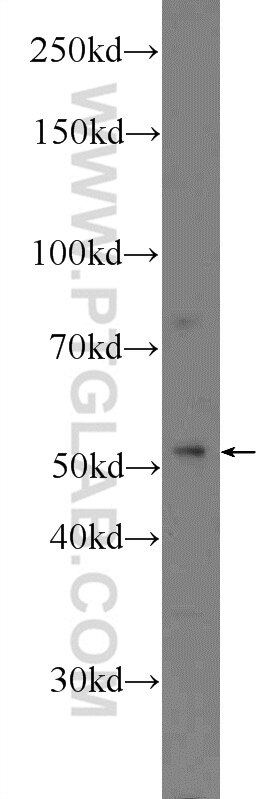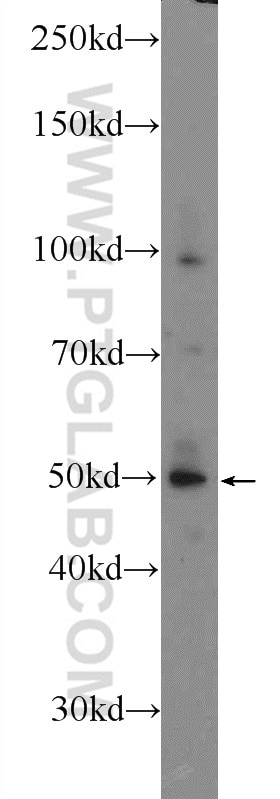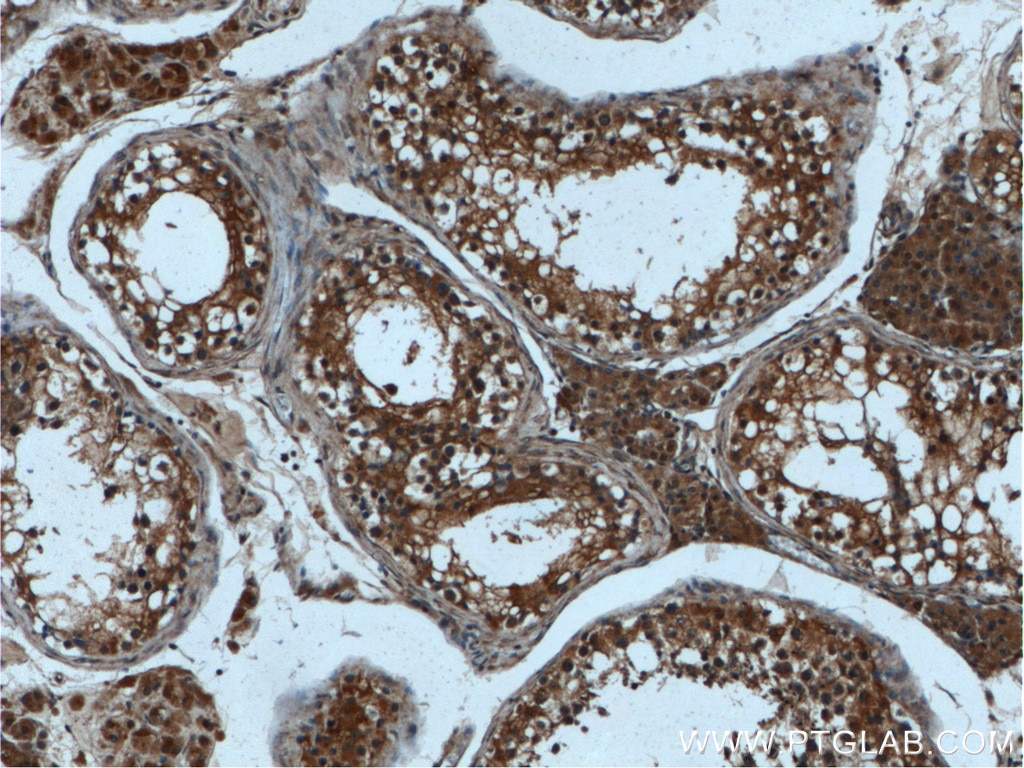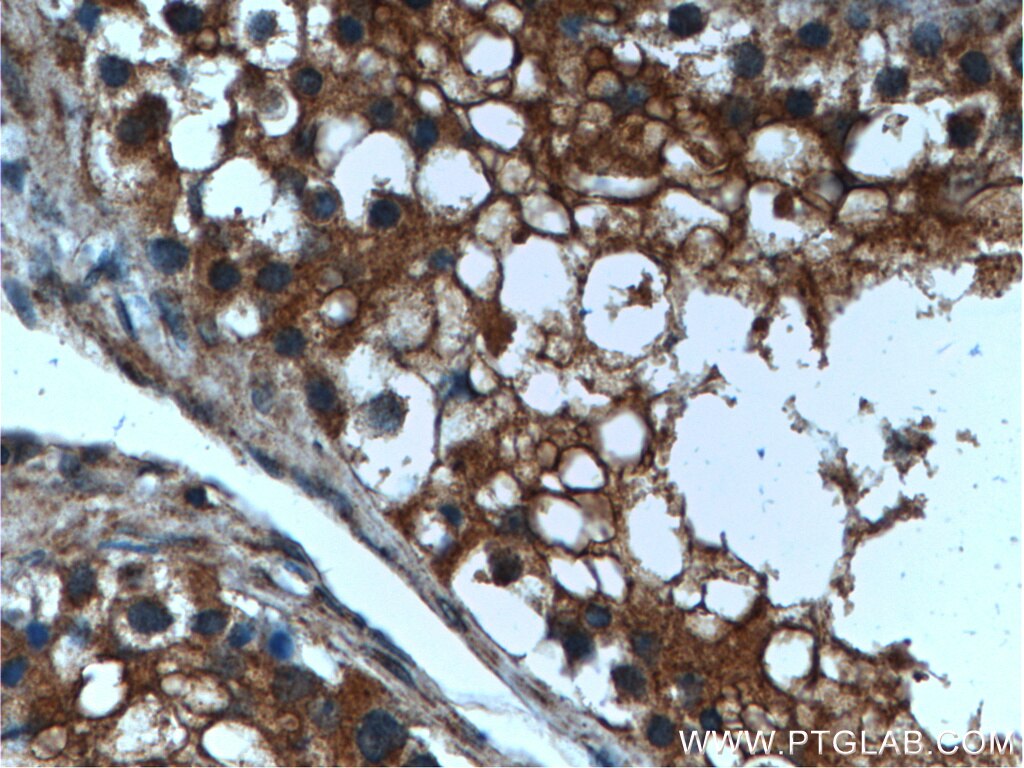Tested Applications
| Positive WB detected in | A549 cells, mouse lung tissue |
| Positive IHC detected in | human testis tissue Note: suggested antigen retrieval with TE buffer pH 9.0; (*) Alternatively, antigen retrieval may be performed with citrate buffer pH 6.0 |
Recommended dilution
| Application | Dilution |
|---|---|
| Western Blot (WB) | WB : 1:200-1:1000 |
| Immunohistochemistry (IHC) | IHC : 1:50-1:500 |
| It is recommended that this reagent should be titrated in each testing system to obtain optimal results. | |
| Sample-dependent, Check data in validation data gallery. | |
Product Information
24300-1-AP targets LIPI in WB, IHC, ELISA applications and shows reactivity with human, mouse samples.
| Tested Reactivity | human, mouse |
| Host / Isotype | Rabbit / IgG |
| Class | Polyclonal |
| Type | Antibody |
| Immunogen |
CatNo: Ag19024 Product name: Recombinant human LIPI protein Source: e coli.-derived, PET28a Tag: 6*His Domain: 264-481 aa of BC148691 Sequence: FSGIQFIKCNHQRAVHLFMASLETNCNFISFPCRSYKDYKTSLCVDCDCFKEKSCPRLGYQAKLFKGVLKERMEGRPLRTTVFLDTSGTYPFCTYYFVLSIIVPDKTMMDGSFSFKLLNQLGMIEEPRLYEKNKPFYKLQEVKILAQFYNDFVNISSIGLTYFQSSNLQCSTCTYKIQRLMLKSLTYPERPPLCRYNIVLKDREEVFLNPNTCTPKNT Predict reactive species |
| Full Name | lipase, member I |
| Calculated Molecular Weight | 460 aa, 55 kDa |
| Observed Molecular Weight | 50 kDa |
| GenBank Accession Number | BC148691 |
| Gene Symbol | LIPI |
| Gene ID (NCBI) | 149998 |
| RRID | AB_2879483 |
| Conjugate | Unconjugated |
| Form | Liquid |
| Purification Method | Antigen affinity purification |
| UNIPROT ID | Q6XZB0 |
| Storage Buffer | PBS with 0.02% sodium azide and 50% glycerol, pH 7.3. |
| Storage Conditions | Store at -20°C. Stable for one year after shipment. Aliquoting is unnecessary for -20oC storage. 20ul sizes contain 0.1% BSA. |
Protocols
| Product Specific Protocols | |
|---|---|
| IHC protocol for LIPI antibody 24300-1-AP | Download protocol |
| WB protocol for LIPI antibody 24300-1-AP | Download protocol |
| Standard Protocols | |
|---|---|
| Click here to view our Standard Protocols |










